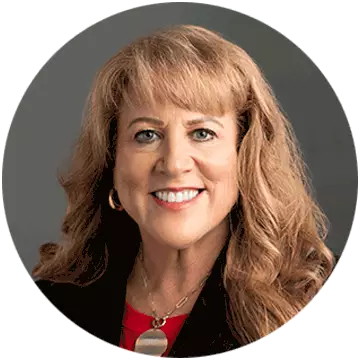Important things to know about postsecondary education

Written by Michael Feder

Reviewed by Pamela M. Roggeman, EdD, Dean, College of Education

A wide range of educational opportunities is available after a student graduates high school, earns a GED or obtains another secondary completion credential. This is known as postsecondary education or tertiary education. The length of your postsecondary education might differ from that of another student, since it depends on your academic plans and long-term goals.
For example, someone wanting to become a nursing assistant may only need take a one-year certificate program, while someone who wants to become a college professor will likely need to go on to earn a master’s or doctoral degree, which can take multiple years to obtain after completing a four-year bachelor’s degree.
If you have a high school diploma or secondary completion credential (like a GED), learning about the postsecondary education system can help you define your goals and create a plan to find the right program for you.
Secondary vs. postsecondary education
Secondary education, also known as high school in the United States, is the level of education that comes after primary/elementary school . In primary school, students generally work year-round with one teacher. In secondary school, studies are often more focused and students have several teachers who specialize in different subjects. Secondary school teachers work to prepare students for adulthood and future educational opportunities.
While secondary school, or at least a portion of secondary school, is mandated by state laws, postsecondary education is different. Completion of postsecondary programs are not required by law, and people can choose whether they want to pursue a program to advance their general learning, prepare for a specific career or develop a certain skill set.
Types of postsecondary institutions
Postsecondary education can be a great option because it accommodates many different goals, needs, budgets and time constraints. By understanding the different types of educational options available to you, you can choose the one that works best for you.
Vocational/Trade schools
Vocational, or trade schools, are ideal for high school graduates who want to learn a specific trade and enter the workforce quickly. Vocational/trade schools are often responsible for training plumbers, electricians and other vocations that require a specialized set of skills.
Most trade school programs can be completed in under two years, and they qualify you to work in your chosen profession without additional education. They operate under an intensive, career-focused curriculum.
Community colleges
The historical goal of a community college is to provide educational opportunities for people locally. Community colleges normally offer certificates, professional development programs and a range of two-year degrees called associate degrees. With an associate degree a person can graduate and enter the workforce, or they can transfer those credits to a four-year institution and have the credits from the associate degree count toward a bachelor’s degree.
Community colleges do not have selective admission requirements and are normally more affordable than larger four-year institutions. While pursuing an associate degree at a community college, you will need to take some general education courses in subjects like English, math and history, and then fill out the rest of your requirements with courses specific to the subject you are earning your degree in.
Colleges and universities
Colleges and universities are educational institutions that offer four-year undergraduate degrees, and many times they offer more advanced degrees such as master’s and doctoral degrees. Colleges and universities may also offer associate degrees and certificates, but the focus of these schools is usually on higher degree levels.
In the United States, an undergraduate bachelor’s degree program typically takes students four years to complete when attending school full time. A bachelor’s degree program is a mix of a breadth of studies through general education (math, English, humanities, etc.) and a depth of study in the student’s major or focus area, which is why the degree generally takes four years to earn.
After completing a four-year undergraduate program, a student may continue at the university level to earn a master’s or doctoral degree to acquire expert-level knowledge within a specific field of study. Doing so may unlock career advancement or teaching opportunities.
In the past several decades, distance learning has grown in popularity at colleges and universities. Students can now earn associate, bachelor’s, master’s and even doctoral degrees completely online.
These programs often have affordable tuition rates, and adults who are working full time, traveling frequently or raising a family benefit from the flexibility that online programs provide. Online programs also may provide new opportunities for students who did not think going to a college or university was possible upon high school graduation.
Alternative Postsecondary Learning Options
There are other learning options outside of certificate and degree programs that postsecondary institutions provide to prospective learners.
Non-degree students
If you are not interested in earning another degree after graduating high school, that doesn’t mean you have to leave the classroom forever. Many community colleges and universities allow non-degree students to take courses. This opportunity is ideal for individuals who want to take a specific class to learn about a new topic or develop a skill but aren’t interested in pursuing an entire degree. Institutions may have different admissions requirements for students who are not trying to earn credits or complete a degree and want to take single courses as a non-degree student.
Life skills programs
Not every postsecondary program is a strictly academic or focused on a career outcome. For example, life skills programs exist to help students develop social skills, critical thinking and independence needed to succeed in the world and create awareness about life and society around us. Life skills programs may be offered at local schools, community colleges and cultural centers.
Continuing education programs
Even if you do earn a postsecondary degree, that does not mean your education is done. If you’re trying to earn a raise or a promotion, or you want to develop a more specialized skill within your field, then participating in a continuing education program might be the right choice. Additionally, certain professions, like teaching, may require individuals to take recurring continuing education courses to stay current on trends and needs. Colleges and universities often host these programs, and you can speak with your supervisor about potential tuition funding or other benefits that may be available through your employer to help you pursue continuing education opportunities.
Who can benefit from postsecondary education?
Not everyone needs or wants formal postsecondary education. However, there are several groups of people who may benefit from these educational opportunities:
- Professionals who want to expand their career opportunities
- Lifelong learners who want to explore new subjects
- Newly graduated high school students with specific career aspirations
- Adults looking to enter a new field
Before you pursue a postsecondary education program, be sure to ask yourself what your goals are and how the program in question will help you achieve those goals. Defining your goals will not only help you choose the right program, but it will also motivate you to complete that program.
Qualifications for postsecondary education
For many postsecondary education programs, the primary requirement for admission is that the applicant hold a diploma or certificate from a secondary school or a General Education Development (GED) equivalent program. Community colleges and universities may ask applicants for their grade point average (GPA) to determine the applicant’s previous level of academic achievement for placement and academic planning purposes. Some colleges require standardized test scores, but this depends on the goals and competitiveness of the admissions process for that institution.
To gain admittance to University of Phoenix, applicants must:
1. Have earned a high school diploma or GED
2. Be at least 16 years old at the time of application (if applying to a bachelor’s degree program)
3. Be a citizen or permanent resident of the U.S. or hold an approved, valid visa
4. Not have been expelled from a previous institution
5. Complete all admissions forms
6. Submit official test scores and transcripts from all colleges and universities attended
7. Meet any state/territory-specific requirements
Undergraduate vs. graduate postsecondary education
Undergraduate education encompasses associate and bachelor’s degrees. Graduate education consists of master’s and doctoral degree programs. Each level is indicative of the depth of study for the major or discipline in the field of study and can lead to different outcomes.
A graduate degree conveys a deeper level of expertise within a certain field, allowing graduate degree holders to potentially stand out during a job search, earn a higher salary and have more responsibilities within their careers. It’s up to you and your career goals to decide whether continuing your education past undergraduate studies is right for you.
Online programs at University of Phoenix
If you’re looking to pursue your educational and career goals, and postsecondary education interests you, consider the flexible and fixed-rate online programs at University of Phoenix (UOPX). UOPX does not require entrance exams and takes pride in offering busy, working adults the opportunity to earn certificates and degrees through online programs that are customizable to their schedule. Here’s a look at varying levels of postsecondary education UOPX offers:
- Certificates
: Certificates allow you to focus directly on skills you need for your career in a shorter amount of time for a specific topic area — many of which can be completed in less than nine months for just over $10K.
- Associate degrees
: Online associate degrees develop the foundational skills you need to enter growing fields, like business
, information technology
and criminal justice
.
- Bachelor’s degrees
: Take charge of your future by earning an online bachelor’s degree that’s affordable, career-relevant and fits with your schedule. Degree options include fields such as business, nursing, education, healthcare, technology and more!
- Master’s degrees
: If you’ve already earned your bachelor’s degree, a master’s degree can help you advance your management and leadership skills. UOPX offers at least 27 master’s programs nationwide!
- Doctoral degrees
: UOPX offers five doctoral programs in the fields of health administration, nursing, business administration, management and education.

ABOUT THE AUTHOR
A graduate of Johns Hopkins University and its Writing Seminars program and winner of the Stephen A. Dixon Literary Prize, Michael Feder brings an eye for detail and a passion for research to every article he writes. His academic and professional background includes experience in marketing, content development, script writing and SEO. Today, he works as a multimedia specialist at University of Phoenix where he covers a variety of topics ranging from healthcare to IT.

ABOUT THE REVIEWER
As dean of the University of Phoenix College of Education, Pamela Roggeman has spent over a decade in higher education teacher preparation in both the public and private sector. Her experience has included national partnerships that help to advance thought leadership in the field of education. Dr. Roggeman also serves as the President of the Arizona Educational Foundation’s Board of Directors.
This article has been vetted by University of Phoenix's editorial advisory committee.
Read more about our editorial process.
Read more articles like this:


